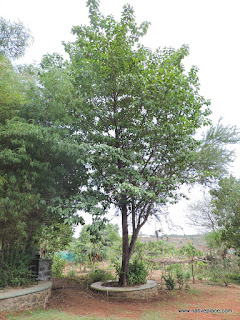Last week at Native Place i happened to go up to the terrace after breakfast and was rewarded by the sighting of a huge flock of cormorants hunting for fish. A whole swarm of them were encircling an area presumably there were lots of fish there. From the distance they made a magnificent sight – the surface of the water was disturbed with their flapping wings as they swirled around creating a huge circular cauldron, diving in, running on water and flapping about. A few straggler egrets added to the drama creating a black and white canvas against the blue waters.
I checked out this new phenomenon that seemed
to be unfolding right in front of us for the next few days just to be sure and
yes – it was happening every day. Wow!!!
Such a wondrous sight!
For the first time one can see what seems to
be the entire colony fishing together and it makes quite an impact on the
senses.
Cormorants have been a common sight by the lake
shore at Native Place. Through the year one could spot the odd group in the
mornings by the lake shore, diving for fish and perching on tree tops and
bushes by the shores wings spread out to dry in the sun. During summer evenings one had these
exhilarating sightings where one looked up by chance to suddenly spot wave upon
wave of V shaped flocks akin to migrating geese as they flew back to their
roosting spots for the night (or so i believed)
In the recent years an entire colony has taken to roost in a grove of acacia trees on a
narrow spit of land that juts out into the lake
just a few years ago becoming our neighbors. J
Since then we have had the pleasure of watching
them at sunset time as they circle around the area and then head for a tree.
Lots of squawking and shoving goes on at sunset until they go quiet for the
night.
It’s lovely to have a pristine water body
before you and spot lake shore birds but to see an entire colony intently at
work circling low over the lake is surely special!
The pictures above simply don't convey the largeness of the phenomenon - you have to see it to feel it ! Come connect with nature at Native Place.
More about Cormorants: - Cormorants are large black, fish eating birds with a long, hook tipped bill.They are daytime feeders that hunt alone or in flocks. Cormorants feed by diving and swimming underwater. They can dive to depths of 5 to 60 feet below the surface and stay under water up to 70 seconds. They eat mostly fish and sometimes small invertebrates. Cormorants use their webbed feet to propel them underwater. Cormorants run along the surface of the water to gain enough speed for flight. Watching these diving birds by the lakeside is a wonderful way to spend time.
The pictures above simply don't convey the largeness of the phenomenon - you have to see it to feel it ! Come connect with nature at Native Place.
More about Cormorants: - Cormorants are large black, fish eating birds with a long, hook tipped bill.They are daytime feeders that hunt alone or in flocks. Cormorants feed by diving and swimming underwater. They can dive to depths of 5 to 60 feet below the surface and stay under water up to 70 seconds. They eat mostly fish and sometimes small invertebrates. Cormorants use their webbed feet to propel them underwater. Cormorants run along the surface of the water to gain enough speed for flight. Watching these diving birds by the lakeside is a wonderful way to spend time.
Connections: - Recently i came across an interesting piece of info relating the
presence of cormorants to tarpon fishing -
When you eat like a
cormorant — which is a lot — you poop like a cormorant — which, again, is a
lot. This potent concoction falls from the cormorant's precarious perch,
entering the food chain only a few feet below. Bacteria then grow in this
enriched, (let's call it fertilized) water. Soon the plankton count their lucky
stars while feeding on this heaven-sent bounty. Small invertebrates and protozoa’s
gorge on the plankton, and on and on it goes up the line. Shrimp, crabs and
sardines bless father cormorant before gorging on the millions of minute krill
or the collected organic detritus they leave behind.
At the top of this food
chain are the tarpon. They come for the bounty the cormorant droppings provide
and, with the tarpon, come the anglers. It is simple math: more cormorants mean
more food for the tarpon's prey. More guano creates more food and more food
means more tarpon.
Perhaps we shouldn't be
so judgmental about cormorants and their greedy eating and pooping habits.
Perhaps we should be glad these ancient avians do their digesting where they
do. Perhaps we should be glad they haven't better mastered the air. Perhaps we
should be pleased they only use flight to get to the fishing grounds and then
trundle home again, straight for the mangroves.
Some guides in Mexico say
that they kill cormorants because they eat baby tarpon. Gentlemen … haven't you
learned by now that it is best not to mess with Mother Nature? Let her be. She
has things pretty well worked out, and her devices usually work to the benefit
of the angler. Mess with her, and you just may be killing the goose that laid
the golden egg. Although in this case it may not be a goose, but a cormorant,
and it may not be an egg, but a pile of … OK, OK. You get the picture. So
let's all bless the cormorants.
Astrid Rao






